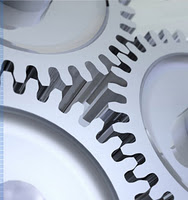Most likely, we have all swiped a credit card and signed for our purchases at the grocery store or department store. We may have even signed for a package when delivered to our home using the same type of technology – a signature capture pad. It is clear that many retail environments have adopted the use of signature capture technology, but what many people may not realize is that we are seeing an increase in usage by other industries, such as field service and sales. In addition, doctors, medical offices, financial institutions, research, manufacturing, operations and government agencies are all taking advantage of electronic signature capture.
It might be time for your company to start asking, “How can we take advantage of digital signature capture to help streamline processes and reduce overall printing, filing and scanning costs?” Below are some questions to consider within various industries.
Streamlining Company Processes within:
The warehouse…
- Does your driver arrive at the warehouse, where multiple copies of the order and invoices are then printed and signed? From there, are copies filed at the warehouse with a copy sent to headquarters where the final version is filed or scanned and filed?
Insurance companies…
- How do your customers authorize their transactions with you? For instance, when meeting at their house to sign up for a new insurance policy, are they able to sign an electronic signature pad at the end of the meeting and receive 1 finalized document outlining their entire policy?
Banks and financial institutions…
- How long does it take for the bank president and local lending company to sign-off on a loan for a customer’s new house? If the bank has multiple branches throughout the state, do you courier copies of the paperwork to the central bank so that all finalized loan packages are signed before they are sent back to the correct branch? If so, multiplying this by 50 loans per day creates a huge (unneccessary) issue.
Have I enticed you to take a look at your current business processes and ask yourself if electronic signature capture is a technology you may want to explore?
As trends continue to show that companies are migrating their businesses to electronic workflows, it is apparent that these transformations are significant in nature. Companies can see a return-on-investment (ROI) that is directly related to the savings found in time and diminishing the costs of paper-related expenses such as printing, filing and other physical archiving, as well as error rates. Furthermore, providing the field worker with product, service and sales tools allows for additional sales opportunities on-site and real-time results in greater company revenue. Remember though – these electronic tasks require an electronic or handwritten signature for payback. Dependent upon requirements and compliance issues, both authorization and security issues need authorization, which can be addressed with signature capture technology.
In this ever-changing technology-centered enviroment, signature capture is here to stay! If your company could benefit from data capture and/or storing and distribution of documents with signatures, it’s time to contact L-Tron for assistance in learning more about your potential ROI with this technology.


